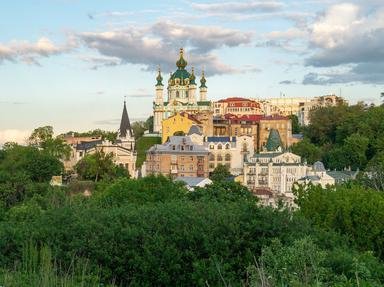Quiz Answer Key and Fun Facts
1. Russian Empire royal decree bans Ukrainian Language instruction
2. Ukraine declares its independence from the Russian Republic
3. The Ukrainian Soviet Socialist Republic is founded as part of the Soviet Union
4. The Holodomor Famine results in death of millions in Soviet Ukraine
5. Transfer of Crimea from Russian SFSR to the Ukrainian SSR
6. Ukraine declares its independence from the Soviet Union
7. Treaty on Friendship, Cooperation, and Partnership between Ukraine and Russia
8. Ukraine launches bid to join NATO
9. Annexation of Crimea by the Russian Federation
10. Russia announces recognition of Donetsk People's Republic and Luhansk People's Republic
Source: Author
reedy
This quiz was reviewed by FunTrivia editor
gtho4 before going online.
Any errors found in FunTrivia content are routinely corrected through our feedback system.
